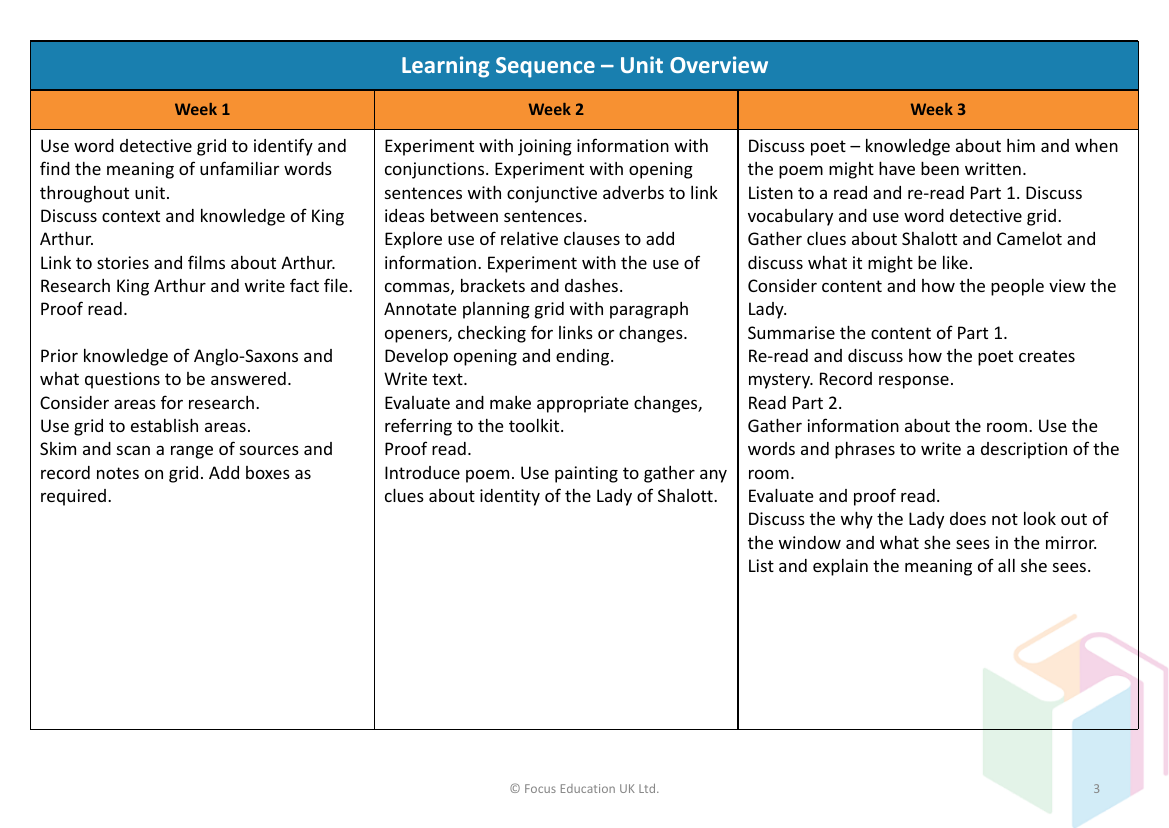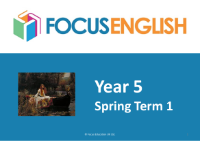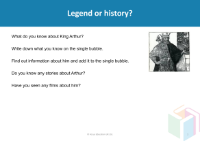Lady of Shalott - Learning Sequence

English Resource Description
The Lady of Shalott learning sequence is a comprehensive unit spanning six weeks, designed to enhance students' understanding of language, literature, and history. The unit begins by equipping students with a 'word detective grid' to decipher unfamiliar vocabulary throughout the course. The first week delves into the historical context of King Arthur, encouraging students to link their knowledge to stories and films about Arthur and to compile a fact file through research. This sets the stage for the following weeks, where students build upon prior knowledge of the Anglo-Saxons and develop research skills, using the grid to organise their findings. Students are then guided to experiment with language features such as conjunctions, conjunctive adverbs, relative clauses, and punctuation, such as commas, brackets, and dashes, to enhance their writing. Each week culminates in writing tasks, from descriptive texts to persuasive arguments, with an emphasis on proofreading and making appropriate revisions.
As the unit progresses, students are introduced to the poem 'The Lady of Shalott' and use visual aids, such as paintings, to infer details about the poem's mysterious protagonist. Through listening, re-reading, and vocabulary exploration, the students engage deeply with the text, summarising content and analysing the poet's techniques to create mystery and characterisation. The sequence continues with a focus on developing comprehension and analytical skills, as students explore character motivations, predict plot developments, and compare characters like the Lady and Lancelot. The final weeks involve creative writing, such as crafting a persuasive argument or writing a flashback scene using the past perfect tense, all the while referring to a toolkit to refine their work. The unit concludes with a reflective session where students consider the poem's imagery, unanswered questions, and compare its themes to other stories involving curses or spells, culminating in a personal response to the poem.


